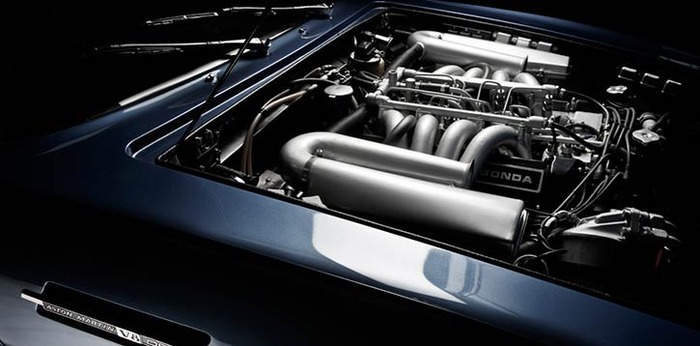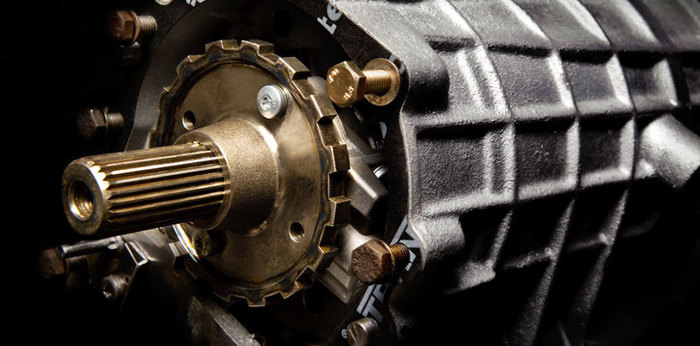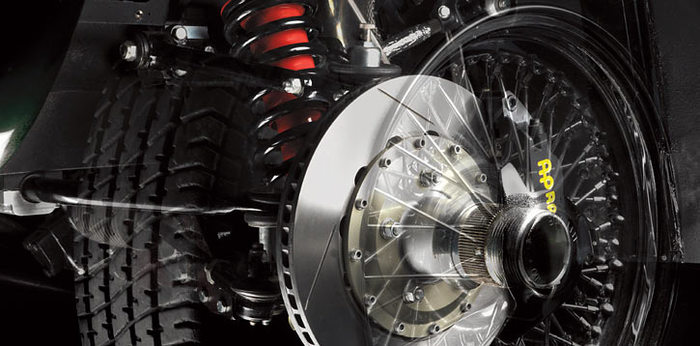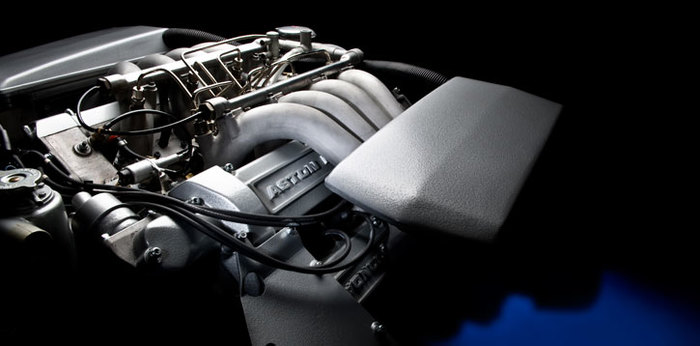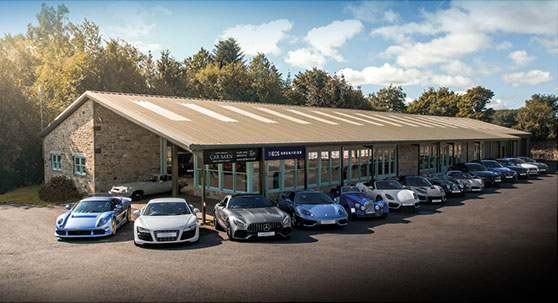The Aston Martin V8 engine was originally defined and specified during 1963 as the DB5 was being readied for production.
From the outset, conceived as a V8 of greater than 4 litre capacity, it incorporated many of the same technical and physical features of its predecessor, particularly, cylinder block design. This eventually resulted in an engine of 6 litre capacity.
